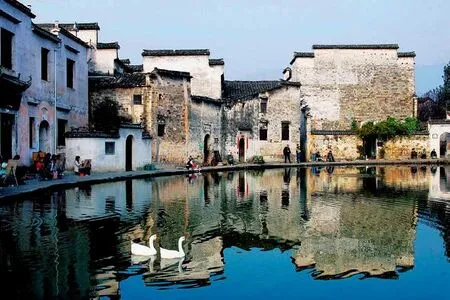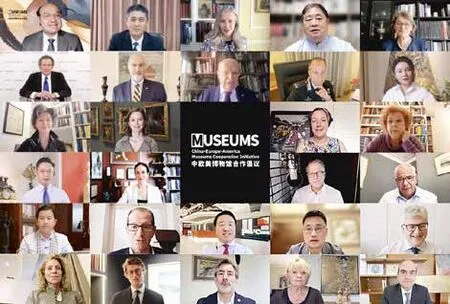How China Combats Cultural Racketeering
2022-07-27TextbyDeborahLehr
China’s role as a powerhouse in the global art market means that it is uniquely well positioned to take on a more proactive role in fighting the illicit trade of antiquities.
C hina is experiencing a surge in widespread interest in its ancient archaeological heritage.The country opened an average of one new museum every two days between 2016 and 2020.Last March,a livestream of excavations at the Sanxingdui Ruins site in Sichuan Province attracted some four million viewers and over a billion comments and views on China’s twitter-like social media site Weibo.And it demonstrates that the Chinese market in artifacts,antiques,and fine art is booming.In 2021,it was valued at US$13.4 billion,making up 20 percent of the global total,second only to the United States.
根据前文分析的高校教学资源库平台设计需求,相关工作人员可以在JavaEE的基础上,对教学教源库的资源存储能力进行优化设计,满足高校日常教学工作的发展需求。我国部分高校在进行研发设计的过程中,采用了seafile作为云端网盘存储的系统软件。此种软件具有较为明显的安全性和稳定性特征,可以为用户提供目前网络环境中主流云端资源存储软件的所有功能。在此基础上,教师和学生群体就可以利用高校教学资源库平台,实现资源的上传、在线浏览和下载等目的[2]。
Unfortunately,China’s antiquities have attracted more than just tourists,viewers,and legitimate buyers—they have also attracted criminal traffickers and looters.But now,the Chinese government is making a serious effort to crack down on such crimes.
For one,China has strengthened its laws,both nationally and locally.By the end of 2016,there were 154 local laws,138 local government statutes,and more than 13,000 local regulatory documents related to cultural work across the country.China has paired these laws with a much stronger approach to enforcement.In 2021,the country launched a crackdown that caught 650 gangs and resulted in the arrests of 61 of the 62 most-wanted suspects of cultural relic theft.Chinese authorities had recovered more than 150,000 cultural relics from overseas as of September 2021,according to
,a domestic media outlet.
China is also incorporating the protection of cultural history into its broader urbanization planning.This priority is reflected at the very highest levels of the Chinese government.In a message to UNESCO last year,President Xi Jinping emphasized that we “must properly handle the relationship between urban reconstruction and development and the protection and utilization of historical and cultural heritage,and ensure that urban development and heritage protection are well coordinated.”
其次,加强校园网络管理与监控队伍建设。高校要选择政治素质高、责任心强、理论素养过硬的人员负责校园网络监控与管理工作,并依托管理队伍建立完善的网络舆情收集与分析机制,以便及时发现校园网络特别是新媒体存在的倾向性问题,并提出解决办法。高校要通过对校园网络管理队伍的建设,培养一批综合素质高的校园网络意见领袖,使他们面对突发公共事件和重大网络问题时能够引领舆论导向,防止网络负面舆论、恶意攻击行为和其他非理性网络行为的出现。
我选择成为摄影师是出于对民族和文化的热爱。我对多元的文化、风俗传统和纺织制品都非常感兴趣。我可以花数小时倾听人们谈论他们的生活和文化。
As part of this coordinated effort,China recently generated a plan on how to use tourism to simultaneously protect culture and generate growth.The National Cultural Heritage Administration of China announced a new web platform that provides information about where to see the stolen objects that have been repatriated back to China.It also features a list of missing international antiquities,and includes two databases:the Stolen(Lost) Cultural Relics Information Publishing Platform of China and the Stolen Foreign Cultural Relics Database which are aimed at retrieving lost cultural property.


Beyond its national efforts,China has taken steps to engage internationally to cooperate in the fight against antiquities trafficking.One notable example is the Cultural Property Agreement(CPA) between China and the United States.This agreement shuts American borders to looted antiquities and stolen art from China,while seeking to increase responsible cultural cooperation and exchange between the two nations.The CPA is a valuable tool against illicit trade,benefiting both countries.By restricting the import of undocumented cultural objects—those which lack a so-called “provenance”or paper trail—into the United States,countries like China can deal an effective blow against the global black market.Beyond the import restrictions themselves,the CPA also provides for mutual cooperation,such as traveling museum exhibitions,professional exchanges,and joint research projects.China has similar bilateral agreements with over 20 other countries around the world on the subject of antiquities protection.
China is also engaging intergovernmental organizations like UNESCO,the cultural arm of the United Nations,as part of its strategy to better protect its heritage.In particular,UNESCO’s World Heritage List has become an important platform for China,through which it is securing global recognition for its rich cultural patrimony.In doing so,it is now neck and neck with other top cultural powerhouses,such as Italy,which has 58 designated World Heritage sites.China has 56 sites that have received this status.China is using the international prestige that comes with such a designation as a force multiplier,encouraging local protection of sites as well as domestic tourism,with major economic impacts as a result.For example,only one year after the addition of Xidi and Hongcun,ancient villages in southern Anhui Province,to the World Heritage List,tourism replaced agriculture as the dominant industry in the villages.
In sum,China’s energetic effort to protect antiquities has made significant progress in recent years.As interest in China’s artifacts continues to grow,it will be well served by maintaining national efforts to preserve cultural history and by further pursuing global coordination in the fight against illicit antiquities trafficking.The illicit trade in art and antiquities is a global problem that touches every corner of the world.However,China’s role as a powerhouse in the global art market means that it is uniquely well positioned to take on a more proactive role in fighting the illicit trade of antiquities.As China becomes ground zero for the challenges of antiquities theft,it can also serve as a model for how to fight back and stop their loss.